What is “Red”?
The color red is often associated with passion, love, and romance. In fact, the color red has a long history of being used as a symbol of love and desire. The ancient Greeks and Romans believed that red was the color of love, and they often used red roses to express their emotions. In China, red is considered to be a lucky color, and it is often used in wedding ceremonies and other special occasions. Red is also the national color of many countries, including China, Canada, and the United States. So what exactly is red? In terms of light waves, red is the longest wavelength of visible light. On the color wheel, red is located opposite of green, and it is considered to be a primary color. Red can also be created by mixing the colors orange and purple together. Whether you see it as a sign of love or luck, there’s no denying that red is a powerful and evocative color.

Red Light
Red light has the longest wavelength of all the colors in the visible spectrum. That means it has the least energy and is the least likely to cause damage to your eyes. That’s why red light is often used in nighttime applications, like red-dot sights on guns or red brake lights on cars. It’s also why red light therapy is gaining popularity as a way to heal injuries and boost energy levels. When red light hits your skin, it can stimulate collagen production and increase circulation. Some research suggests that red light therapy can also help to ease joint pain and reduce inflammation. If you’re interested in trying red light therapy, make sure to consult with a healthcare professional to get the most out of this treatment.

Red Pigment
In nature, the red pigment is produced by a variety of substances, including plant dyes and minerals. In the laboratory, red pigments can be made from a wide range of materials, including metals, plastics, and even food coloring. The red color is produced when light strikes the pigment and is reflected back to the eye. Carmine is a red pigment typically used in paints, cosmetics, and food coloring. It is derived from the cochineal bug, a small insect that feeds on cactus plants. When the bugs are crushed, they release a red dye that can be used to color a variety of products. Carmine is known for its bright hue, and it is often used to add a pop of color to products that are otherwise dull or lifeless. While some people are put off by the fact that it is made from insects, carmine is actually a safe and non-toxic pigment. In fact, it has been used for centuries in a variety of different cultures. So, if you’re looking for a red pigment that will make your products stand out, carmine is definitely worth considering.

What does red mean?
The etymology of red is complex and fascinating. The color red has been associated with many different things throughout history, from danger and violence to love and passion. The word red itself comes from the Old English word “read”, which was used to describe any red-colored object, for example a “ready” (ruddy) face complexion. Over time, the word red came to be used specifically for the color, and it eventually made its way into other languages as well. In many cultures, red is seen as a powerful and positive color, symbolizing strength, courage, and energy. It is also often associated with important events or holidays, such as Christmas or Valentines Day. Whether you see red as a sign of power or love, there’s no denying that it is a deeply layered and significant color with a long history.
VALUES
Technical Information about the Color Red – #FF0000
Red is one of the primary colors and holds an important place in the RGB color model. Specifically, red is made up of a mix of red light and no other light at all, producing a red hue when viewed. Interestingly, this red hue is also used to produce all other colours in the RGB system by mixing red with other spectrums of light. In some cases, red has been known to stimulate strong feelings amongst people; such reactions depend on cultural context and can range from showing love or anger to symbolizing good luck or danger. In any event, red always stands out as an aesthetically appealing colour to both the eye and the mind.
All Color Value Conversions
| VALUE | CSS | |
|---|---|---|
| HEX VALUES | ff0000 | #ff0000 |
| RGB DECIMALS | 255, 0, 0 | rgb(255,0,0) |
| RGB PERCENTAGES | 100, 0, 0 | rgb(100%, 0%, 0%) |
| CMYK | 0, 100, 100, 0 | |
| HSL | 0°, 100, 50 | hsl(0°, 100%, 50%) |
| HSV (OR HSB) | 0°, 100, 100 | |
| WEB SAFE VALUES | ff0000 | #ff0000 |
| CIE-LAB | 53.241, 80.092, 67.203 | |
| XYZ | 41.246, 21.267, 1.933 | |
| XYY | 0.64, 0.33, 21.267 | |
| CIE-LCH | 53.241, 104.552, 39.999 | |
| CIE-LUV | 53.241, 175.015, 37.756 | |
| HUNTER-LAB | 46.116, 82.7, 28.335 | |
| BINARY | 11111111, 00000000, 00000000 |
The Color Red in Nature

Red Animals
Red is one of the most widespread colors in the animal kingdom. In many species, red plays an important role in communication. For example, male Cardinals are brightly red in order to attract mates, and many male insects use red to signal their availability to females [red bird meaning]. Red can also be used as a warning coloration. In some poison dart frogs or red butterflies, the red coloration is a warning to predators that the animal is poisonous. Red is also commonly seen in animals that are trying to intimidate rivals or predators. In some species, such as baboons and chimpanzees, red is correlated with high levels of testosterone, and animals will often display red patches in order to assert their dominance. Ultimately, red is a powerful and versatile color that plays an important role in the lives of many animals.
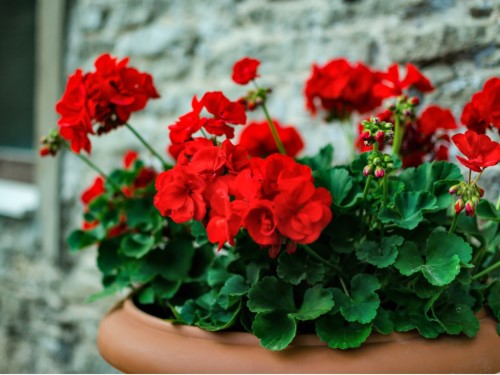
Red Plants and Flowers
Red is one of the most popular colors in the plant world. It can be found in flowers, fruits, and even leaves. In the garden, red can add a touch of drama and make a bold statement. Red flowers are especially popular in bouquets and floral arrangements. When it comes to fruit, red is often seen as a sign of ripeness and sweetness. Red grapes, apples, and strawberries are all prized for their flavor. In some cultures, red leaves are considered lucky and are used in ceremonies and rituals. Red flowers such as roses are extremely popular in tattoo designs. Regardless of its meaning or significance, red is certainly a color that commands attention.
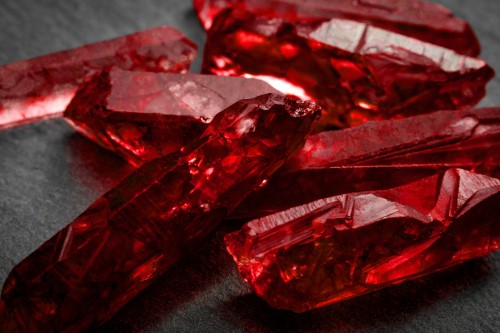
Red Minerals and Substances
There are a number of red minerals found in nature, including red ochre, cinnabar, and ruby. Each of these minerals has its own unique properties and uses. Red ochre is a red clay that is commonly used in artists’ paints and crayons. It gets its red color from the presence of iron oxide. Cinnabar is a red mercury sulphide mineral that is used in a variety of applications, including as a pigment and in Lapis lazuli jewellery. Ruby is a red variety of the mineral corundum and is prized for its hardness and beauty. Rubies are often used in fine jewellery and are also believed to have mystical powers.
One of the most distinctive features of blood is its color. Most of the time, blood is a bright red, due to the presence of oxygen. When oxygen binds to hemoglobin, a protein in red blood cells, it gives the blood a red hue. However, blood can also take on a darker color when it is deoxygenated. This can happen when blood flow is restricted, as in cases of heart disease or high blood pressure. The red color of blood also plays an important role in wound healing. When a blood vessel is damaged, red blood cells rush to the site of the injury and release oxygen, which helps to promote healing. In addition, the red color of tissue supports the growth of new cells. So, next time you see a cut or bruise, remember that the red color of your blood is essential for keeping you healthy.
The Color Red in World Cultures

The Color Red in Europe
Red has been associated with Europe for centuries, and it is a color that is steeped in history and culture. From the red banners of the French Revolution to the red carnations of Spain, red has long been associated with European identity. In recent years, red has also become a popular color among European fashionistas, with many designers using it to make bold statements on the catwalk. Whether it is used to symbolize strength and power or simply to make a statement of style, red is a color that always seems to make an impact in Europe.
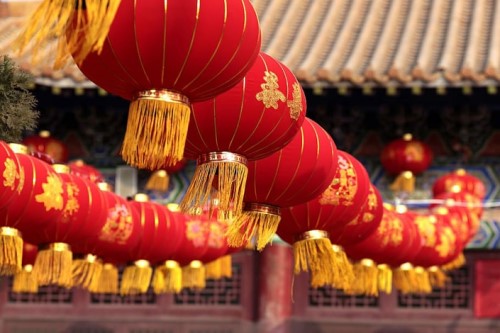
The Color Red in Asia
In Asia, the color red is often associated with good luck and prosperity. It is also considered to be a powerful color that can ward off evil spirits. As a result, red is a popular color for clothing, decorations, and gifts. In China, red is the traditional color of weddings, and it is also used to decorate homes and businesses during the country’s biggest holiday, Chinese New Year. In Japan, red is used as a symbol of strength and courage. It is also believed to bring good luck, which is why red beans are often given as gifts. In Korea, red is the color of happiness and good fortune. It is also associated with summer and the hot sun. As a result, red is a popular color for clothes, umbrellas, and other items that are used to protect against the sun.
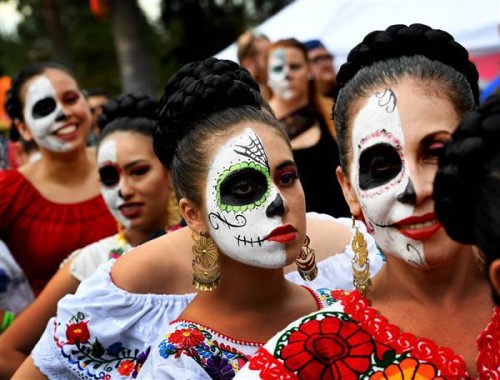
The Color Red in Latin America
In Latin America, the color red has a variety of different meanings. For example, in Mexico, red is often associated with the Day of the Dead, while in Chile it is seen as a symbol of good luck. In addition, red is often used to represent strength and power, as well as passion and heat. As a result, the color red plays an important role in Latin American culture. It is not only a beautiful and eye-catching color, but also a powerful symbol of the diverse traditions and beliefs of the people who live in this vibrant region.

The Color Red in the Middle East
In the Middle East, the color red has a long and complex history. For centuries, it has been associated with luck, fertility, and good fortune. It is also the traditional color of weddings and other celebrations. In more recent years, red has come to be seen as a symbol of political rebellion and resistance. In countries like Iran and Iraq, red flags are often flown to show support for the government. Red is also a popular color for protest signs and graffiti. Whether it is seen as a sign of hope or a symbol of defiance, the color red continues to play an important role in the culture of the Middle East.

The Color Red in Africa
In Africa, red is often associated with power, energy, and vitality. It is also seen as a color of happiness and good fortune. Red is often used in traditional African art and clothing. For example, many African cultures use red ochre to decorate their bodies for special occasions. In some parts of Africa, red is also considered to be a symbol of death. In many cultures, red is associated with blood and violence. However, in some cases red can also represent life and fertility. For example, in the Ethiopian Orthodox Church, red is worn by priests during certain religious ceremonies. Red is also a popular color choice for weddings in many African cultures.
The Color Red in Religion and Psychology

The Color Red in Christianity
In Christianity, red is often associated with the blood of Christ and the sacrifices made for our salvation. It is also the color of the Holy Spirit and represents the fire of God’s love. In addition, red is often used to represent the joy and hope that we have in Christ. Whether it is used in art or worn as a piece of clothing, red is a powerful reminder of the love and sacrifice of Jesus Christ.

The Color Red in Islam
In Islam, red is often seen as a symbol of purity and righteousness. It is one of the colors of the blessed month of Ramadan and is often used in decoration during this time. red is also worn by pilgrims during the Hajj, as it is believed to bring good luck. It is also often associated with the blood of martyrs, which is seen as a type of sacrifice for the greater good. The color red is also frequently paired with other religious symbols or symbols of Islamic nations, such as several national flags and the official symbol of the Red Crescent charitable association.

The Color Red in Buddhism
Buddhism is a religion that encompasses a variety of traditions, beliefs, and practices. One common thread that runs through all of Buddhism is the use of color to represent different aspects of the religion. For example, orange is often used to symbolize wisdom, while white represents purity. The color red also holds a significant place in Buddhism. While it can represent different things depending on the context, red typically symbolizes compassion. This is fitting, as one of the core tenets of Buddhism is the belief in compassion for all beings. In addition, red is also associated with luck and good fortune. As a result, it is not surprising to see red used extensively in Buddhist ceremonies and rituals. Whether it is used to represent compassion or good fortune, red plays an important role in Buddhist tradition.
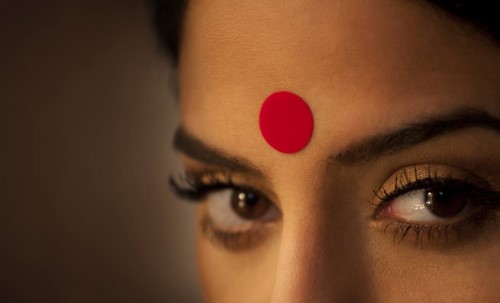
The Color Red in Hinduism
In Hinduism, red is considered to be a sacred and powerful color. It is often used in religious ceremonies and rituals, and it is also believed to have cleansing and purifying properties. Red is also the color of fire, and it is associated with strength, energy, and passion. In some traditions, red is also seen as the color of love and fertility. In addition to its spiritual significance, red is also the traditional color of weddings and other celebrations. Hindus believe that red symbolizes life-force and vitality, and it is often used to encourage good luck and prosperity.

Red in color psychology
Red is a color that has a long history of association with various psychological effects. In some cases, red can be associated with feeling agitated or excited. In others, it can be seen as a sign of danger or warning. Red is also often used to represent power and aggression. Studies have shown that red can influence our emotions and behavior in various ways. For example, seeing red has been shown to increase heart rate and blood pressure. It can also make us more likely to take risks and act impulsively. While the effects of red on psychology are complex, there is no doubt that this color has a powerful impact on our thoughts and feelings.
Notable Shades of the Color Red

Scarlet
The color scarlet is often associated with passion, violence, and danger. In nature, it is the color of blood and warning signs. It is also the traditional color of fire trucks and emergency vehicles. Scarlet can be a very powerful and eye-catching color, which is why it is often used in advertising and marketing. But it can also be seen as aggressive or overwhelming, which is why it is sometimes used for warning signs or danger warnings. Scarlet is a color that commands attention and demands to be seen. It is powerful, passionate, and intense. And whether you love it or fear it, there’s no denying that the color scarlet is always memorable.

Maroon
Maroon is a dark red color that gets its name from the French word for chestnut. It is often used in fall and winter fashion, as it is associated with warmth and sophistication. Maroon can also be used to create a feeling of richness and luxury. In design, it is often used as an accent color to add depth and dimension. Maroon is a versatile color that can be paired with almost any other color in the spectrum. When used in excess, however, it can appear heavy and jarring. Therefore, it is important to use maroon carefully and sparingly in order to achieve the desired effect.

Crimson
Crimson is a strong, red color. It is often associated with passion and rage. In nature, crimson can be found in the red leaves of autumn, as well as in the red flowers of certain plants. Crimson is also the color of cardinal birds and red pandas. In human history, crimson has been used as a dye for fabrics since ancient times. It was once made from the crushed bodies of insects, but today it is typically made from synthetic dyes. The color crimson is often used to symbolize power and strength. It is also the color of some universities and sports teams. To many people, the color crimson represents danger and warning.

Burgundy
Burgundy is a red wine grape and the color named for it. The color burgundy is similar to a maroon or a dark red. It symbolizes intense emotions, including desire, ambition, and rage. Burgundy is often seen as a color of power and wealth. It is associated with luxury and sophistication. Burgundy is also a traditional color of nobility. It can be seen as a sign of success and status. If you want to make a statement, wear burgundy. You will be sure to turn heads and get noticed.

Vermilion
Vermilion is a vibrant red color that has been used in art and fashion for centuries. Its name comes from the Latin word for red, and it is often associated with passion and energy. Vermilion is also the color of blood, and it is often used to symbolize power and strength. In Chinese culture, vermilion is considered to be a lucky color, and it is often used in decorative art. Vermilion is a very intense color, and it can be difficult to use in large quantities. When used sparingly, however, it can add drama and vibrancy to any design.

